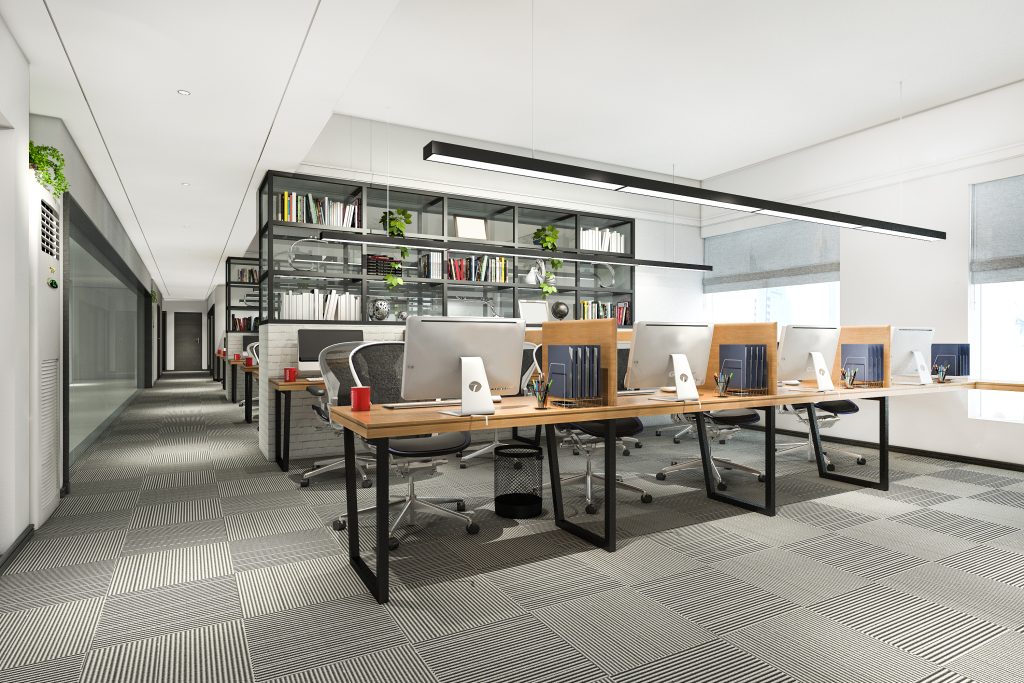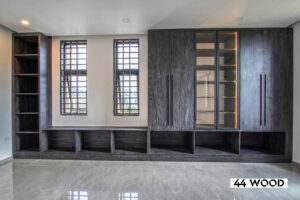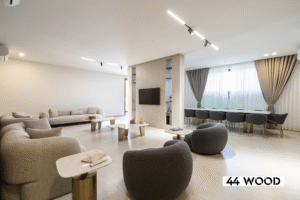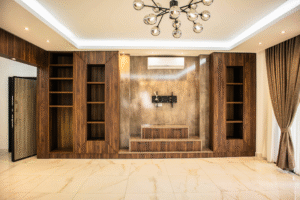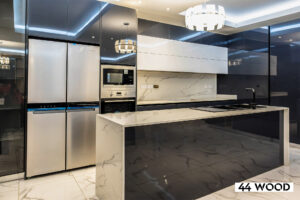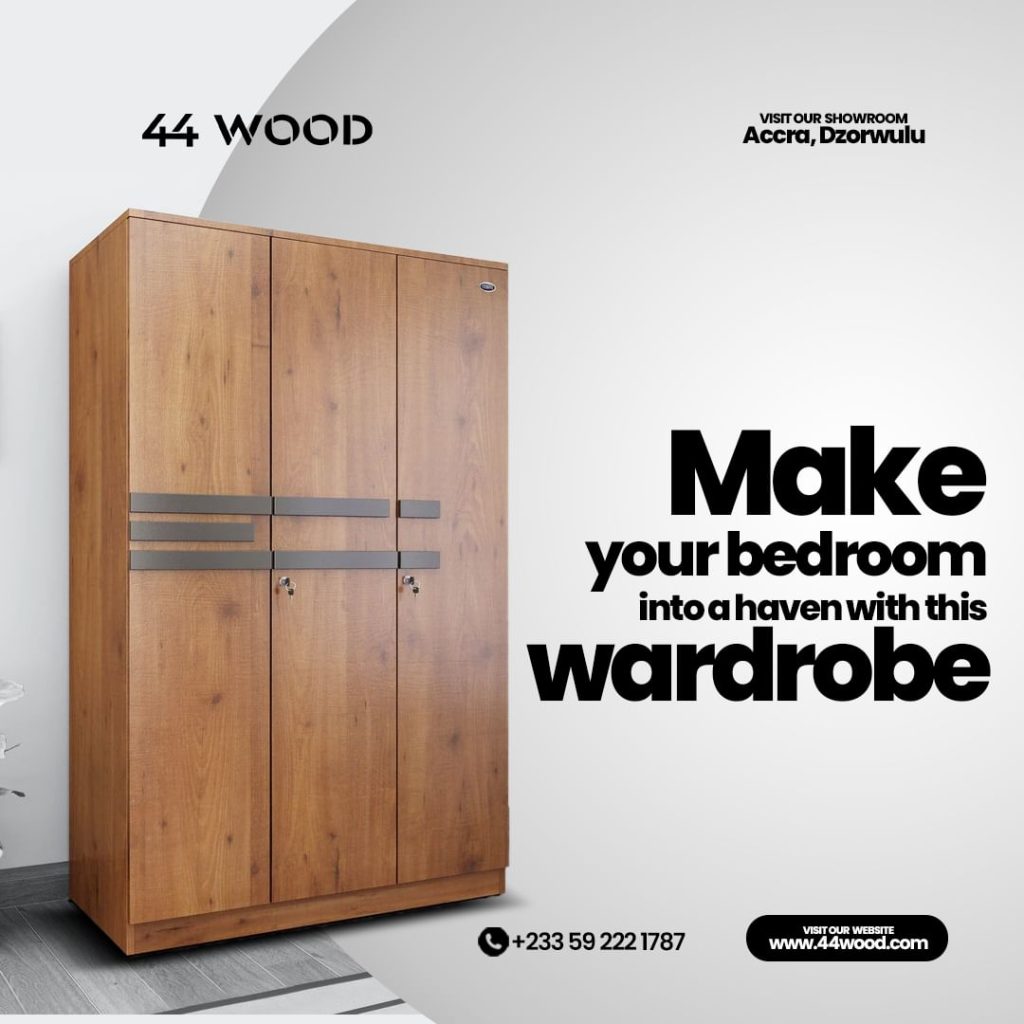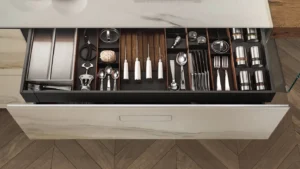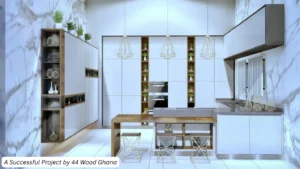In today’s fast-paced working environment, the significance of choosing the right furniture for an office cannot be overstated. The selection of office furniture plays a pivotal role in defining the productivity, comfort, and overall ambiance of the workspace.
From office space and layout to comfort, functionality, and brand image, the factors to consider when choosing office furniture are diverse and multifaceted. In this comprehensive guide, we will delve into the essential factors that should be taken into account when selecting office furniture.
We will explore the various types of office furniture, ranging from desks and workstations to chairs, storage solutions, and meeting furniture, shedding light on their pivotal roles in creating an efficient and welcoming work environment.
Understanding the different types of office furniture is crucial, as it allows businesses to tailor their choices to their specific needs. We will also discuss the most suitable types of office furniture, such as modular, adjustable, multi-functional, and sustainable options, providing insight into how each type can enhance the functionality and aesthetics of the workspace.
We will offer practical tips for choosing the right furniture for your office, emphasizing the importance of considering the needs and preferences of employees, prioritizing solace and functionality, and adhering to budget constraints.
By the end of this article, readers will gain a comprehensive understanding of the critical role that office furniture plays in shaping a productive and conducive work environment, as well as the various considerations and options available when selecting the most suitable furniture for their office.
Key Takeaways:
The correct furniture is crucial for a productive and professional office environment. Consider office space, easement, functionality, and aesthetics when choosing furniture. Modular, adjustable, multi-functional, and sustainable furniture are suitable options for an office.
What Is the Importance of Choosing the Right Furniture for an Office?
Choosing the right furniture for an office is crucial as it contributes to the aesthetic ambiance, efficiency, and overall well-being of the employees. It is not just about functionality but also about creating a conducive work environment that reflects the brand image and values.
By carefully selecting office furniture that aligns with the company’s vision and culture, employers can promote a positive work atmosphere. Comfortable seating, ergonomic desks, and well-designed storage solutions can enhance employee satisfaction and reduce discomfort or fatigue, ultimately boosting productivity. Incorporating elements of well-being such as standing desks or communal areas can contribute to the overall health and happiness of the team.
The style, quality, and durability of the furniture also play a crucial role in portraying the brand’s image and values to clients and visitors, making it essential to invest in pieces that reflect professionalism and creativity.
What factors should be considered when choosing office furniture?
Several factors should be taken into account when choosing office furniture, including the office space and layout, the alleviation and ergonomics of the furniture, and the desired aesthetic ambiance, such as an industrial contemporary vibe or a rustic atmosphere.
Understanding the available office space is crucial – furniture must complement the layout and size to minimize clutter and optimize the functionality of the workspace. Comfortable seating and ergonomically designed desks and chairs are essential for promoting effectiveness and reducing the risk of physical strain or injury.
The aesthetic preferences play an important role in creating a specific ambiance that aligns with the company’s brand and culture.
Office Space and Layout
The office space and layout are pivotal in determining the type and quantity of furniture needed. Factors such as floor area and budget considerations are pivotal in optimizing the workspace.
In smaller office spaces, it’s crucial to prioritize space-saving furniture to ensure that every area is utilized effectively. This might involve opting for multifunctional pieces, such as desks with built-in storage or compact cubicle systems.
On the other hand, larger office areas allow for more flexibility and creativity in furniture selection, enabling the inclusion of collaborative workstations or separate lounge areas.
Budget constraints can be addressed by exploring cost-effective yet durable options and considering furniture hiring as an alternative to outright purchasing.
Additionally, ergonomic furniture choices can enhance employee efficiency and well-being, further contributing to the optimal utilization of the workspace.
Comfort and Ergonomics
Comfort and ergonomics are critical factors in office furniture selection, especially considering the various tasks employees perform, such as computer work, video conferencing, and data entry. The right office chair and workstation setup can significantly impact effectiveness and well-being.
When employees spend long hours at their desks, the office chair becomes more than just a piece of furniture; it becomes a tool for easement and health. Ergonomic features, such as adjustable seat height and lumbar support, are essential for maintaining good posture and reducing the risk of musculoskeletal issues.
A well-designed workstation setup, with proper desk height and monitor positioning, can also prevent strain and fatigue, promoting a more efficient and pleasant working experience.
Functionality and Versatility
Functionality and versatility are key considerations for office furniture, encompassing elements such as the efficiency of office desks, storage solutions, and organizational features that enhance productivity and adaptability in the workspace.
Efficient office furniture not only provides the necessary tools for work but also ensures a comfortable and ergonomic environment, allowing employees to focus and perform at their best. Versatile furniture pieces can be easily reconfigured to adapt to changing needs, whether for collaborative projects or individual tasks, promoting a dynamic and agile work setting.
Aesthetics and Brand Image
Aesthetics and brand image are integral aspects to consider when choosing office furniture, as they contribute to creating an environment that reflects the company’s identity and values, whether it’s an industrial contemporary vibe or a rustic atmosphere.
Office furniture functions not only as a practical necessity but also as a visual representation of the company’s ethos. Each aesthetic theme, be it sleek and modern or warm and traditional, communicates a distinct message about the organization.
Consistency in design across workspaces fosters a cohesive brand image, instilling a sense of unity and professionalism. A well-thought-out office aesthetic can leave a lasting impression on clients, shaping their perception of the company and its approach to business.
What are the different types of office furniture?
Office furniture encompasses a diverse range of types, including desks and workstations, chairs and seating, storage and organization solutions, meeting and conference furniture, as well as reception and waiting for area furniture, and break room and lounge furniture.
Desks and workstations come in various styles, such as traditional, modern, standing, and adjustable height, catering to different work preferences. Chairs and seating options range from ergonomic office chairs to guest and reception seating, providing easement and style for employees and visitors alike. Storage and organization solutions include filing cabinets, bookcases, and shelving units, essential for maintaining a tidy and efficient workspace.
Meeting and conference furniture typically comprises conference tables, presentation boards, and media furniture, facilitating productive discussions and presentations. Reception and waiting area furniture create a welcoming and professional atmosphere, featuring reception desks, lounge seating, and coffee tables.
Breakroom and lounge furniture are designed to foster relaxation and collaboration, with options such as sofas, armchairs, coffee tables, and dining sets for employees to use during their downtime or informal meetings.
Desks and Workstations
Desks and workstations are fundamental components of office furniture, serving as functional workspaces that need to be optimized for the available office space while ensuring functionality and versatility for various tasks and activities.
Optimizing workspaces is imperative for fostering efficiency and comfort among employees. By strategically placing desks and workstations, offices can utilize every square inch efficiently, creating a conducive environment for work. Functionality plays a crucial role in desk design, incorporating features such as storage options, cable management, and adjustable heights to cater to diverse work requirements.
Chairs and Seating
Chairs and seating options significantly impact the easement and well-being of employees, especially for tasks such as video conferencing and data entry, making the selection of office chairs and seating solutions vital for a productive and ergonomic workspace.
The right office chair can enhance employee concentration and overall health, reducing the risk of musculoskeletal disorders and boosting effectiveness. Ergonomic chairs provide proper back support, minimizing back strain during long hours at the desk.
Specialized seating with built-in features for video conferencing can optimize posture and visual comfort during virtual meetings, fostering effective communication. Adjustable seating solutions cater to diverse employee preferences and body types, contributing to an inclusive and supportive workspace.
Storage and Organization
Effective storage and organization solutions in office furniture contribute to functionality and versatility in the workspace, enabling efficient management of resources and materials while optimizing the use of available office space.
A well-designed storage system not only keeps the workspace neat and tidy but also enhances productivity by providing easy access to essential documents and supplies. The right storage and organization furniture can create a harmonious environment, reducing clutter and promoting a more organized workflow.
It also plays a pivotal role in making a positive impression on clients and visitors, reflecting an image of professionalism and efficiency.
Meeting and Conference Furniture
Meeting and conference furniture play a crucial role in creating a professional and functional environment for collaborative activities, contributing to both the functionality and the representation of the brand image and values.
These furnishings are not just about providing a place for employees or clients to sit and discuss; they are instrumental in shaping the ambiance and aesthetics of the workspace.
The choice of furniture reflects the company’s commitment to creating a conducive and organized setting for strategic discussions and decision-making. It’s vital to ensure that the design and quality of the furniture align with the company’s brand identity and culture, enhancing its professional appeal.
Reception and Waiting Area Furniture
Reception and waiting area furniture are essential for creating a welcoming and branded environment that leaves a lasting impression on visitors, reflecting the company’s identity and values through aesthetic and functional elements.
The reception area acts as the initial point of contact for clients and visitors, setting the tone for their experience with the company. Branding and aesthetics play a pivotal role in this space, as they communicate the organization’s values and personality. Thoughtfully selected furniture pieces like comfortable seating, elegant tables, and artistic decor can convey professionalism, warmth, and style, making a positive statement about the company’s ethos.
The right furniture not only enhances the visual appeal but also creates a comfortable and inviting ambiance.
Break Room and Lounge Furniture
Staff room and lounge furniture significantly impact the easement and well-being of employees during their downtime, creating spaces that promote relaxation and rejuvenation, thereby contributing to a positive work environment.
These designated areas serve as conducive spaces for informal interactions, fostering camaraderie and teamwork among team members. The selection of furniture for these areas plays a crucial role in encouraging creativity and boosting morale, thus influencing overall efficiency.
Comfortable seating, aesthetically pleasing decor, and practical amenities in these spaces can provide a reprieve from the demands of the workday, ultimately revitalizing employees and enhancing their job satisfaction.
What Type of Furniture Is Most Suitable for an Office?
Selecting the most suitable office furniture involves considering options such as modular furniture, adjustable furniture, multi-functional furniture, and sustainable and eco-friendly furniture, each catering to specific needs and preferences.
Modular furniture offers flexibility and can be configured to adapt to the changing needs of the office space. Its customizable nature allows for efficient space utilization and seamless reconfiguration as the business evolves.
Adjustable furniture, such as height-adjustable desks and chairs, promotes ergonomic support, enhancing relief and productivity for employees. It caters to diverse work styles and physical requirements.
Multi-functional furniture, encompassing versatile storage solutions and adaptable workstations, maximizes functionality within a limited office area, fostering organization and streamlined workflows.
Opting for sustainable and eco-friendly furniture not only demonstrates corporate responsibility but also contributes to a healthier work environment, often made from renewable, recyclable, or reclaimed materials, reducing the office’s carbon footprint.
Modular Furniture
Modular furniture offers a flexible and customizable approach to office setups, allowing for efficient space utilization, adaptability to changing needs, and alignment with budget considerations in office furnishing.
This type of furniture allows for versatile configurations, making it suitable for various office layouts. Its adaptable nature enables seamless adjustment to evolving space requirements without the need for complete overhauls. Additionally, modular furniture can be easily reconfigured to accommodate new technology or workforce expansions, providing a cost-effective solution for growing businesses.
Adjustable Furniture
Adjustable furniture provides the flexibility to accommodate diverse ergonomic needs and employee preferences, contributing to enhanced relief and well-being in the office environment.
By allowing individuals to easily adjust the height, angle, and placement of their workstations, adjustable furniture supports proper posture and reduces the risk of musculoskeletal disorders.
This can lead to a healthier workforce and lower rates of absenteeism due to discomfort-related issues. The customizable nature of such furniture promotes a sense of ownership and control over one’s workspace, contributing to overall employee satisfaction, engagement, and productivity.
Multi-functional Furniture
Multi-functional furniture offers space optimization and versatility, serving multiple purposes in the office environment, which can lead to improved productivity and efficiency in workspace utilization.
The adaptability of multi-functional furniture is particularly beneficial for offices with limited space.
By incorporating pieces such as convertible desks that can also function as conference tables or storage cabinets that double as seating, workplaces can efficiently utilize every inch of available area.
The versatility of such furniture enhances effectiveness. Employees can easily transform their workstations for different tasks, whether it’s a team meeting, individual focus work, or collaborative brainstorming sessions.
This adaptability minimizes the need for excess furniture, promoting a clutter-free environment that fosters concentration and creativity. The flexibility of multi-functional furniture allows offices to swiftly adapt to changing needs or accommodate evolving work styles.
Sustainable and Eco-friendly Furniture
Sustainable and eco-friendly furniture options prioritize environmental impact and employee well-being, aligning with the company’s commitment to sustainability and the creation of a healthy workspace.
By opting for sustainable and eco-friendly office furniture, companies can significantly reduce their carbon footprint and contribute to the preservation of natural resources. These furniture options are typically made from renewable materials and are designed to be durable, thus reducing the need for frequent replacements and minimizing waste.
Along with their environmental benefits, these furniture choices also positively influence the well-being of employees. Ergonomically designed pieces can improve posture, reduce discomfort, and enhance productivity, leading to a healthier and more conducive work environment.
What Are Some Tips for Choosing the Right Furniture for Your Office?
When selecting the right furniture for your office, it’s essential to consider the needs and preferences of your employees, prioritize easement and functionality, adhere to budget constraints, and explore DIY options for customization and cost-effectiveness.
Empathize with your employees’ daily activities and consider the type of work they do. Ergonomic chairs and adjustable desks can contribute to their well-being and productivity.
Additionally, organizing team spaces thoughtfully fosters collaboration and creativity.
Whilst setting the budget, focus on durable and long-lasting pieces that ensure value for money. Explore DIY projects like repainting or repurposing old furniture to give your office a unique and personalized touch.
Take into account the needs and preferences of your employees
Understanding the needs and preferences of your employees is crucial in selecting office furniture that promotes relief, and productivity, and contributes to creating a positive aesthetic ambiance aligned with their work style.
By considering ergonomic designs and adjustable features, you can cater to the physical well-being of your team, minimizing the risk of discomfort and related health issues.
Incorporating multi-functional furniture allows for versatility in use, supporting various work activities and spatial requirements.
The aesthetic appeal of the furniture should harmonize with the overall office decor, fostering a visually pleasant and motivating environment for improved morale and focus.
Prioritize Comfort and Functionality
Emphasizing comfort and functionality in office furniture choices is important for promoting employee well-being, and productivity, and creating an ergonomic work environment that supports their tasks and activities.
When employees are comfortable at their workstations, it reduces the risk of chronic physical issues and enhances concentration.
Ergonomic designs, such as adjustable chairs and standing desks, play a crucial role in preventing posture-related discomfort and musculoskeletal problems.
The right furniture arrangements can foster productivity by providing convenient access to tools and resources. Thoughtfully designed workstations, storage units, and meeting spaces optimize workflow and support collaborative activities.
Considering the holistic impact of office furniture on employee well-being and productivity underscores the significance of selecting pieces that prioritize both relief and functionality.
Stick to Your Budget
Adhering to your budget whilst choosing office furniture involves exploring cost-effective options, considering DIY possibilities, and leveraging relationships with reputable manufacturers to optimize the value of your investment.
It’s important to start by determining a budget that aligns with your business’s financial plan. One cost-effective option is to consider purchasing lightly-used or refurbished office furniture, which can offer significant savings without compromising quality. Exploring DIY possibilities for assembling, refurbishing, or customizing furniture can further reduce costs.
Leveraging relationships with manufacturers can also lead to competitive pricing and access to special offers or discounts on bulk orders, providing an opportunity to furnish your office within reasonable budget constraints.
Conduct research and compare options before making a purchase
Thoroughly researching and comparing office furniture options, including reputable manufacturers and design inspirations from platforms like SA Decor & Design, can provide valuable insights for making informed and impactful purchase decisions.
Engaging in comprehensive research before investing in office furniture is essential to ensure that the chosen pieces align with the aesthetics and functionality of the workspace.
By carefully examining the products offered by reputable manufacturers like 44 Wood, businesses can ensure they are investing in high-quality, durable pieces that contribute to a professional and comfortable work environment.
Platforms like SA Decor & Design offer a wealth of creative ideas and innovative designs, serving as a valuable resource for sparking inspiration and staying updated with the latest trends in office furniture.
Frequently Asked Questions
What type of furniture would be most suitable for an office?
There are a variety of furniture options that can be suitable for an office, depending on the needs and preferences of the company. Some common options include:
- Desks and chairs – These are essential pieces of furniture that provide a workspace for employees.
- Storage units – Cabinets, shelves, and drawers are useful for organizing and storing office supplies and documents.
- Meeting tables – These are necessary for holding team meetings and client meetings.
- Lounge seating – If the office has a waiting area or a casual meeting space, comfortable seating options are important.
- Conference room furniture – For larger meetings and presentations, conference tables and chairs are needed.
- Ergonomic furniture – To promote employee easement and productivity, ergonomic chairs and standing desks can be beneficial.
What factors should be considered when choosing office furniture?
When choosing furniture for an office, it is important to consider factors such as:
- Functionality – The furniture should serve its intended purpose and be able to accommodate the needs of employees and clients.
- Comfort – Employees spend long hours working at their desks, so comfortable and ergonomic furniture can help prevent discomfort and injuries.
- Aesthetics – The furniture should match the overall style and design of the office to create a cohesive and professional look.
- Durability – Office furniture should be long-lasting and able to withstand daily use.
- Budget – It is essential to consider the budget of the company and choose furniture that is within the set budget.
How can I ensure the office furniture is suitable for employees with different needs?
One way to ensure that office furniture is suitable for employees with different needs is by offering a variety of options. For example:
- Adjustable chairs and desks can accommodate different body types and promote proper posture.
- Standing desks can be beneficial for employees who prefer to work while standing or have back issues.
- Providing a mix of private and collaborative workspaces can cater to introverted and extroverted employees.
- Having a range of furniture sizes can accommodate employees of different heights and sizes.
- Consult with employees and ask for their input on furniture preferences and needs.
Can I purchase used office furniture for my office?
Yes, purchasing used office furniture can be a cost-effective option for companies on a budget. However, it is important to carefully inspect the furniture to ensure it is in good condition and meets the needs of the office.
It may also be worth considering purchasing refurbished or remanufactured furniture, which has been restored to like-new condition.
How often should office furniture be replaced?
The lifespan of office furniture can vary depending on the quality and amount of use. However, a general rule of thumb is to replace furniture every 5-10 years. Regular maintenance and repairs can help prolong the lifespan of furniture. It may also be necessary to replace furniture if it no longer meets the needs of the office or if there are changes in company size or layout.
Can I customize office furniture to fit the needs of my office?
Yes, many furniture companies offer customizable options to fit the specific needs of an office. This can include choosing the size, color, and features of the furniture. Working with a designer to create a custom layout and design for the office space may also be possible.
However, this customizability may come at an extra cost, so it is important to factor that into the budget. Also, make sure to deal with the best office furniture customization provider such as 44 Wood to create the office furniture of your desires.
